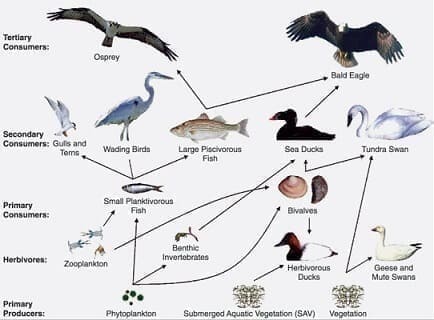Energy and matter in ecosystems
The planet Earth is a large system in which there is an exchange of matter and energy between its components (inert, such as soil, water, etc., and living beings) and, when a change occurs, if it is not too drastic, you can re-establish a balance between its components.
Solar energy is used by autotrophic photosynthetic beings to perform photosynthesis and create organic matter that passes to other living beings, but solar energy is also the generator of winds, climate, sea currents, etc.
An ecosystem has a similar structure. Relationships are established between its components of exchange of matter and energy, since all living beings need matter to be able to grow and renew the tissues that wear out, and energy to be able to carry out their vital functions.
Autotrophic beings, plants, through photosynthesis are capable of forming organic matter (carbohydrates) from inorganic matter (water, carbon dioxide, mineral salts) using the energy of the sun. For this reason, these organisms are called producers of the ecosystem and are the basis of the diet of the rest of living beings.
Animals are heterotrophs, and we need the organic matter made (and the energy it contains) by producers (autotrophs) or other heterotrophs. Therefore, within the ecosystem, we are consumers.
Finally, decomposers and disintegrators transform organic matter into inorganic matter and close the cycle of matter.
There is a flow of energy from producers to decomposers, passing through all trophic levels. It is a linear flow in which energy (from the sun) can only be used once, passing to heterotrophs via food to enable them to perform their life functions.

Flujo de energía en un ecosistema


